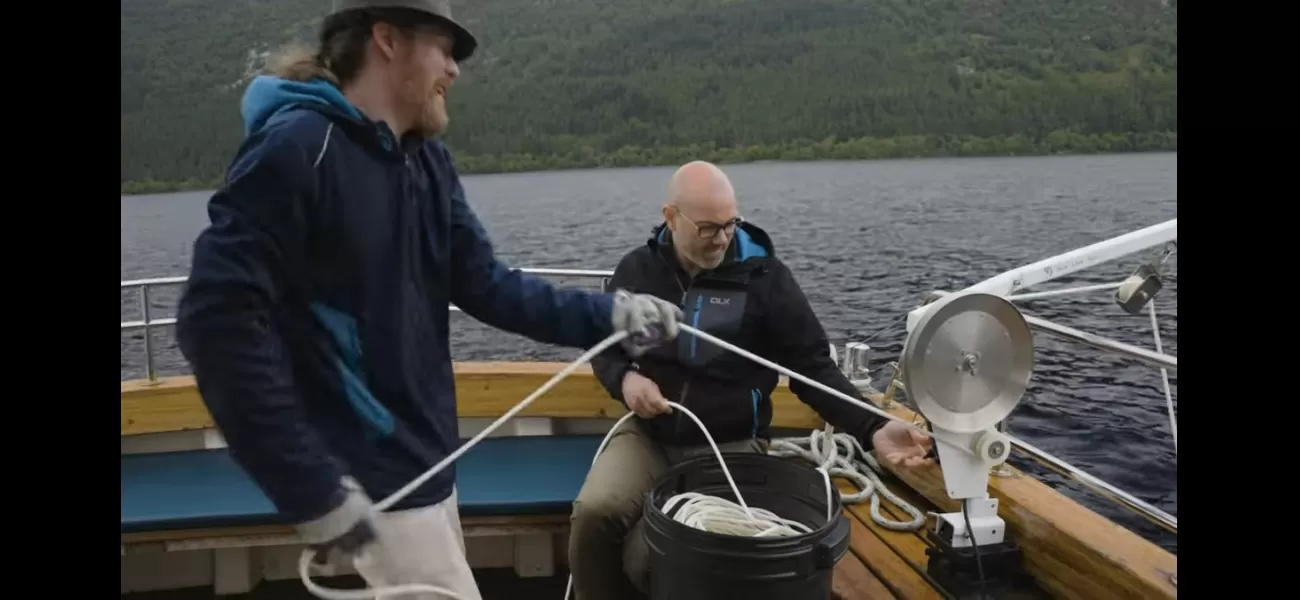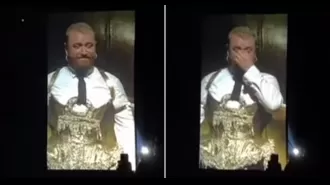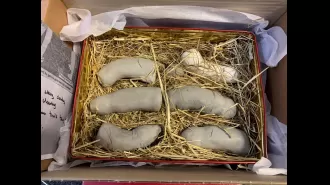A camera with holographic technology sent to Loch Ness has already found small creatures.
Scientists have discovered the existence of a creature resembling the legendary Loch Ness Monster.
August 26th 2024.

A group of researchers have recently deployed a highly advanced camera into the depths of Loch Ness. With the possibility of a legendary giant lurking beneath the surface, these experts are determined to capture any evidence of its existence. And it seems they may have already made some intriguing discoveries.
Using a state-of-the-art holographic camera, the team has managed to capture images of what appear to be "micro-monsters" in the loch. While these organisms are actually plankton and pose no threat to humans, they offer valuable insight into the loch's ecosystem and biodiversity. And who knows what else may be hiding in the thousands of underwater photos yet to be analyzed.
According to Nagina Ishaq, general manager of the Loch Ness Centre, this research aims to uncover the secrets of the loch and its inhabitants. The centre has joined forces with the School of Engineering at the University of Aberdeen to deploy the "weeHoloCam" - a tool specifically designed for freshwater exploration. This is the first time such detailed images have been obtained in Loch Ness, providing a better understanding of its underwater world.
However, the work is far from over as the team is still in the process of identifying and classifying all the organisms captured in the photos. As Dr. Andy Starkey, one of the engineers involved, explains, they will be seeking the help of biologists to accurately identify the creatures. The images captured by the weeHoloCam are unique as they were taken without harming or disturbing the animals, giving us a rare glimpse into their natural habitat.
While Loch Ness is well-known for the infamous "monster" sighting in 1933, there has been little scientific study conducted in the area. Despite claims of photographic evidence, the cryptid - if it even exists - has remained elusive. However, this new research may offer some consolation to those still searching for Nessie, as it has uncovered a new little creature nicknamed "Planktonnie."
Thangavel Thevar, from the University of Aberdeen, explains that this project was a unique opportunity to deploy the weeHoloCam in freshwater, as it had previously only been used in saltwater. The team was particularly interested in the water quality at lower depths and was pleased to find an abundance of interesting particles. With the help of biologists, they hope to learn more about the biodiversity of Loch Ness from these images.
The holographic camera is capable of producing thousands of digital images of microscopic organisms in a single dive. And with the use of AI, these images can be classified and analyzed efficiently. This new project is just one of many that the Loch Ness Centre has undertaken in its pursuit of uncovering the mysteries of the loch. In their recent search, they even used a hydrophone to listen for any unusual sounds coming from the depths of the water.
Alan McKenna, from Loch Ness Exploration, captured a unique noise using the hydrophone, which will be further analyzed. Describing it as a "rhythmic pulsing sound," he hopes it may provide some clues to the secrets of Loch Ness. With the help of advanced technology and the collaboration of experts, we may finally uncover the truth about this famous body of water and its elusive inhabitants.
Using a state-of-the-art holographic camera, the team has managed to capture images of what appear to be "micro-monsters" in the loch. While these organisms are actually plankton and pose no threat to humans, they offer valuable insight into the loch's ecosystem and biodiversity. And who knows what else may be hiding in the thousands of underwater photos yet to be analyzed.
According to Nagina Ishaq, general manager of the Loch Ness Centre, this research aims to uncover the secrets of the loch and its inhabitants. The centre has joined forces with the School of Engineering at the University of Aberdeen to deploy the "weeHoloCam" - a tool specifically designed for freshwater exploration. This is the first time such detailed images have been obtained in Loch Ness, providing a better understanding of its underwater world.
However, the work is far from over as the team is still in the process of identifying and classifying all the organisms captured in the photos. As Dr. Andy Starkey, one of the engineers involved, explains, they will be seeking the help of biologists to accurately identify the creatures. The images captured by the weeHoloCam are unique as they were taken without harming or disturbing the animals, giving us a rare glimpse into their natural habitat.
While Loch Ness is well-known for the infamous "monster" sighting in 1933, there has been little scientific study conducted in the area. Despite claims of photographic evidence, the cryptid - if it even exists - has remained elusive. However, this new research may offer some consolation to those still searching for Nessie, as it has uncovered a new little creature nicknamed "Planktonnie."
Thangavel Thevar, from the University of Aberdeen, explains that this project was a unique opportunity to deploy the weeHoloCam in freshwater, as it had previously only been used in saltwater. The team was particularly interested in the water quality at lower depths and was pleased to find an abundance of interesting particles. With the help of biologists, they hope to learn more about the biodiversity of Loch Ness from these images.
The holographic camera is capable of producing thousands of digital images of microscopic organisms in a single dive. And with the use of AI, these images can be classified and analyzed efficiently. This new project is just one of many that the Loch Ness Centre has undertaken in its pursuit of uncovering the mysteries of the loch. In their recent search, they even used a hydrophone to listen for any unusual sounds coming from the depths of the water.
Alan McKenna, from Loch Ness Exploration, captured a unique noise using the hydrophone, which will be further analyzed. Describing it as a "rhythmic pulsing sound," he hopes it may provide some clues to the secrets of Loch Ness. With the help of advanced technology and the collaboration of experts, we may finally uncover the truth about this famous body of water and its elusive inhabitants.
[This article has been trending online recently and has been generated with AI. Your feed is customized.]
[Generative AI is experimental.]
0
0
Submit Comment





